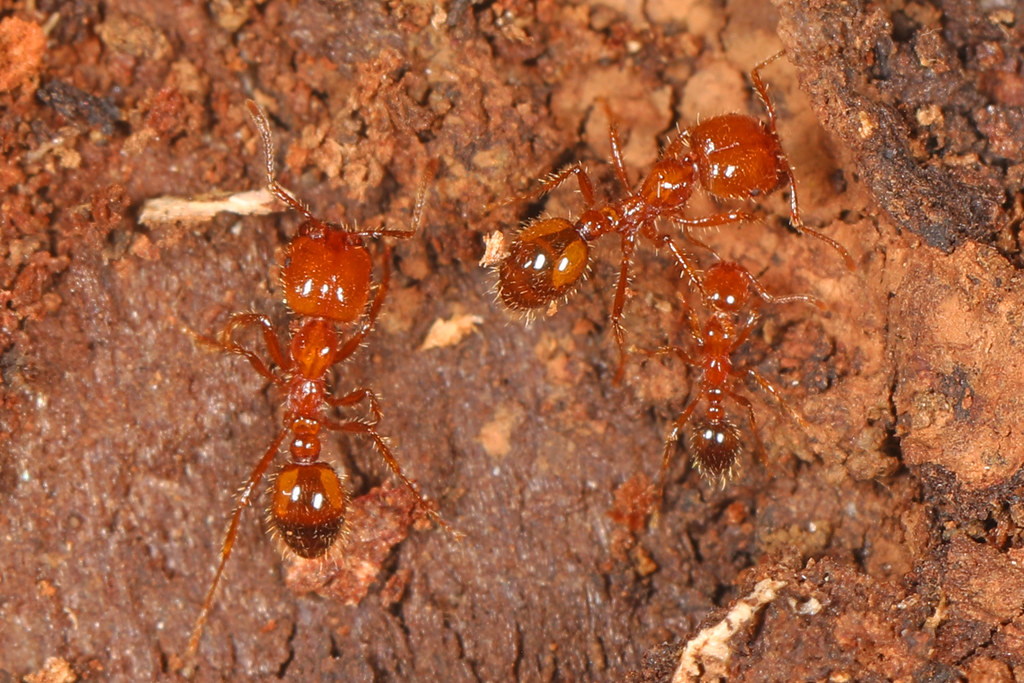Picture this: you’re walking through a lush rainforest, and with every step, you’re literally walking over millions of tiny creatures working tirelessly beneath your feet. The tropical jungles of our planet host more ant species in a single square mile than entire continents do in their temperate regions. This isn’t just a numbers game – it’s a testament to one of nature’s most successful evolutionary stories.
From the towering canopies of the Amazon to the humid floors of Southeast Asian rainforests, ants have carved out niches that would make any real estate agent jealous. These industrious insects have transformed tropical ecosystems into bustling metropolises where every leaf, branch, and grain of soil serves as prime real estate for thousands of different species.
The Tropical Advantage: Why Heat and Humidity Create Ant Havens
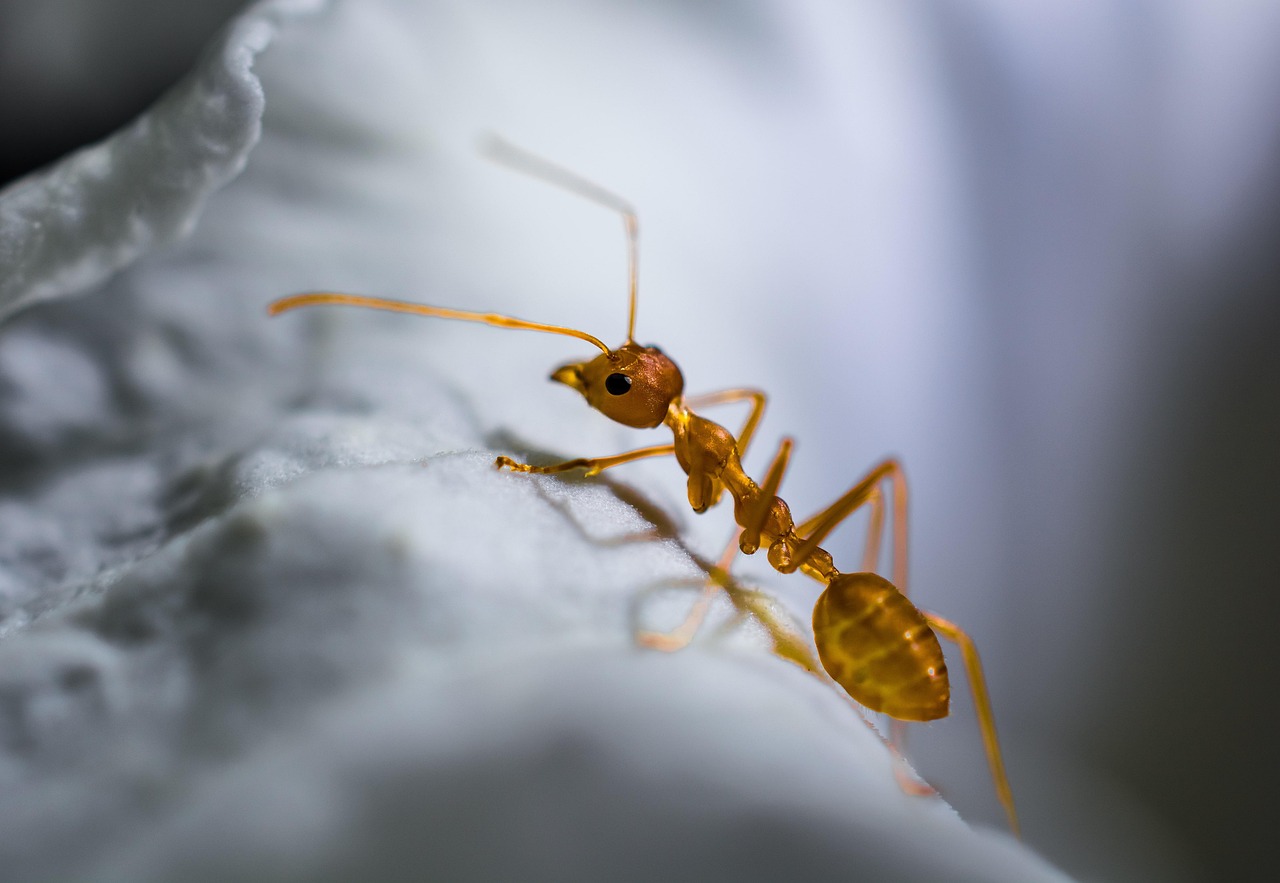
The sweltering heat and constant moisture of tropical regions create the perfect storm for ant diversification. Unlike their temperate cousins who must hibernate through harsh winters, tropical ants can remain active year-round, leading to accelerated evolution and specialization. The consistent warmth means faster metabolism, quicker reproduction cycles, and more opportunities for genetic variation.
This perpetual growing season allows ant colonies to reach massive sizes that would be impossible in cooler climates. Some tropical species maintain colonies with millions of individuals, creating complex societies that rival human cities in their organization. The abundant rainfall also ensures a steady supply of water, eliminating one of the major survival challenges that limit ant populations in drier regions.
Vertical Kingdoms: How Rainforest Layers Create Distinct Ant Worlds
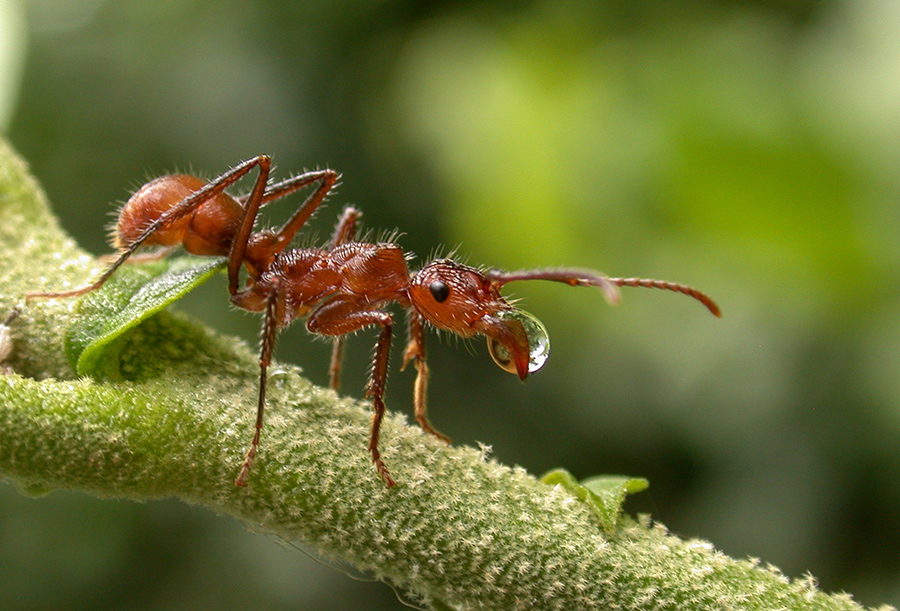
Rainforests aren’t just tall trees – they’re multi-story apartment buildings for ants. The forest floor hosts completely different species than the understory, which in turn differs dramatically from the canopy dwellers. This vertical stratification creates isolated micro-environments where ants can evolve unique traits without competing directly with their neighbors.
Canopy ants have developed remarkable adaptations for life in the treetops, including specialized gripping abilities and enhanced communication systems to navigate the three-dimensional maze of branches. Meanwhile, forest floor species have evolved powerful mandibles for breaking through leaf litter and sophisticated chemical detection systems for locating food in the dark undergrowth.
The middle layers serve as highways between these vertical worlds, with some species specializing as commuters that travel between different forest levels. This creates a complex web of interactions that supports far more species than any single-layer ecosystem could sustain.
The Leaf-Cutter Phenomenon: Agricultural Ants That Predate Human Farming
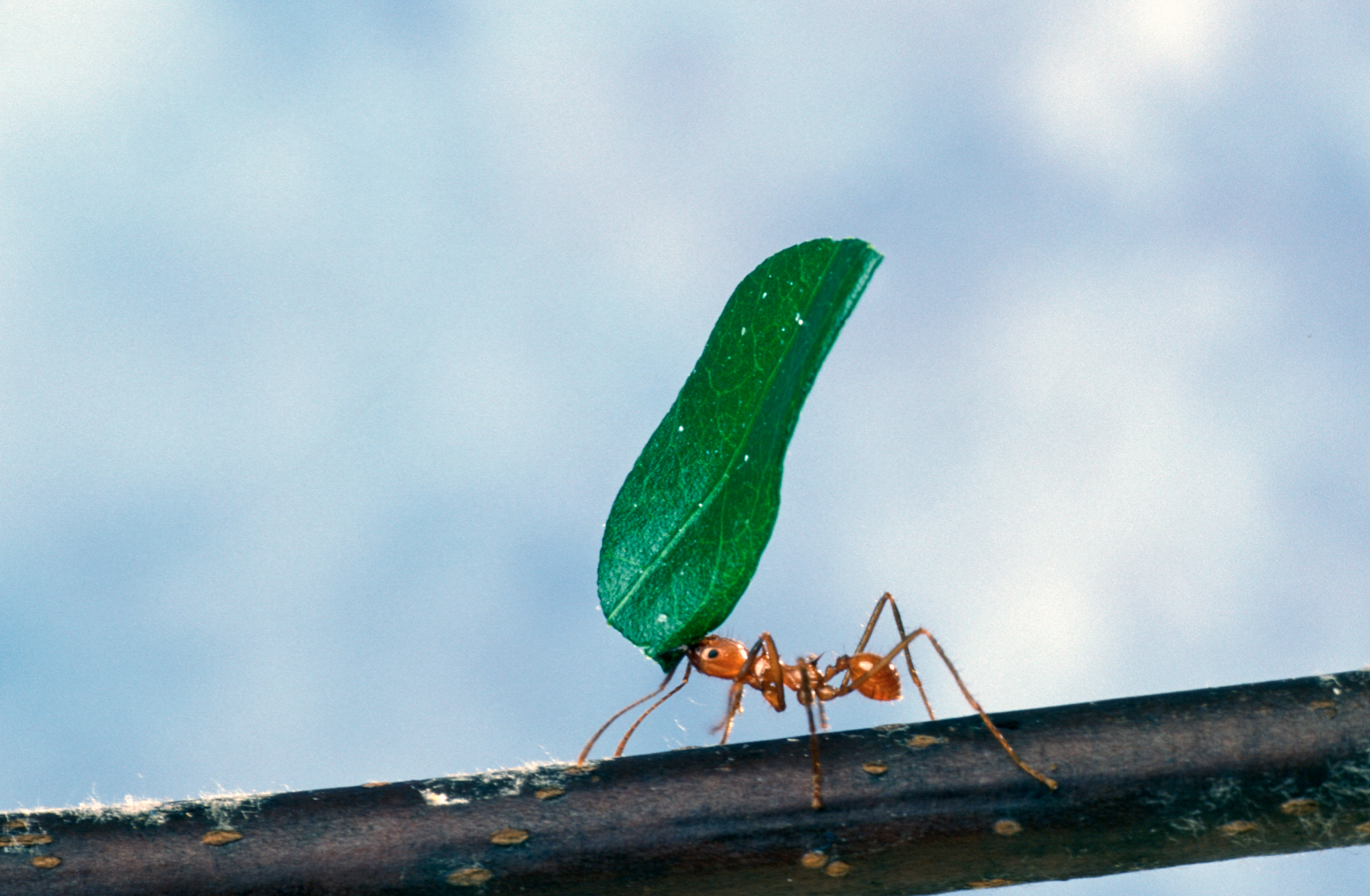
Long before humans invented agriculture, leaf-cutter ants were already running sophisticated farming operations in the tropical Americas. These remarkable insects don’t actually eat the leaves they cut – instead, they use them as compost to grow fungus gardens that feed their entire colony. This agricultural revolution happened roughly fifty million years ago, making ants some of the planet’s oldest farmers.
The complexity of their farming system rivals modern agricultural techniques. Different worker castes handle specific tasks: smaller ants tend the fungus gardens, medium-sized workers cut and transport leaves, while the largest soldiers defend the operation. They even maintain strict quality control, removing contaminated fungus and adjusting growing conditions based on seasonal changes.
Army Ants: The Nomadic Hunters That Strike Fear Into the Forest
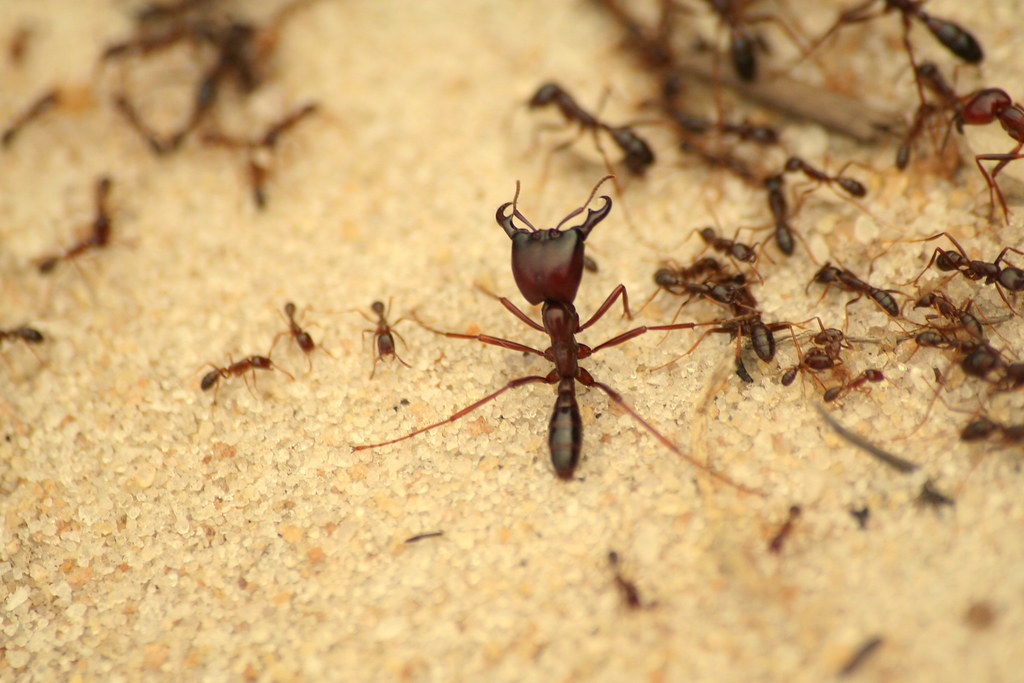
Army ants represent one of nature’s most terrifying hunting machines, and tropical regions are where they reach their most impressive forms. These nomadic predators don’t build permanent nests – instead, they form temporary bivouacs with their own bodies, creating living fortresses that can house up to a million individuals. When they march, everything in their path either flees or becomes dinner.
Their hunting strategy is brutally efficient. They form columns that can stretch for hundreds of meters, systematically sweeping through the forest floor like a biological carpet cleaner. Small animals, insects, and even larger prey that can’t escape quickly enough are overwhelmed by sheer numbers. The sound of their approach – a rustling, clicking symphony of millions of mandibles – sends birds and mammals fleeing in panic.
What makes tropical army ants particularly formidable is their ability to construct living bridges and ladders using their own bodies. When they encounter obstacles, worker ants link together to create temporary structures that allow the colony to maintain its relentless advance.
Chemical Warfare: The Invisible Battle for Territory
Tropical ant societies wage constant chemical warfare that would make any military strategist jealous. These insects communicate, defend territory, and coordinate attacks using complex cocktails of pheromones that create invisible maps throughout the forest. Each species has its own chemical signature, and some have evolved to hack into their neighbors’ communication systems.
The warm, humid conditions of tropical environments are perfect for chemical communication. Pheromones linger longer in the moist air, allowing for more sophisticated messaging systems. Some species can lay chemical trails that persist for days, creating semi-permanent highways through the forest that guide workers to reliable food sources.
Certain tropical ants have weaponized their chemistry beyond communication. They produce formic acid, alkaloids, and other compounds that can blind, paralyze, or kill their enemies. The bullet ant of Central America packs a venom so potent that its sting ranks as one of the most painful insect encounters on Earth.
The Acacia Partnership: When Plants and Ants Form Military Alliances
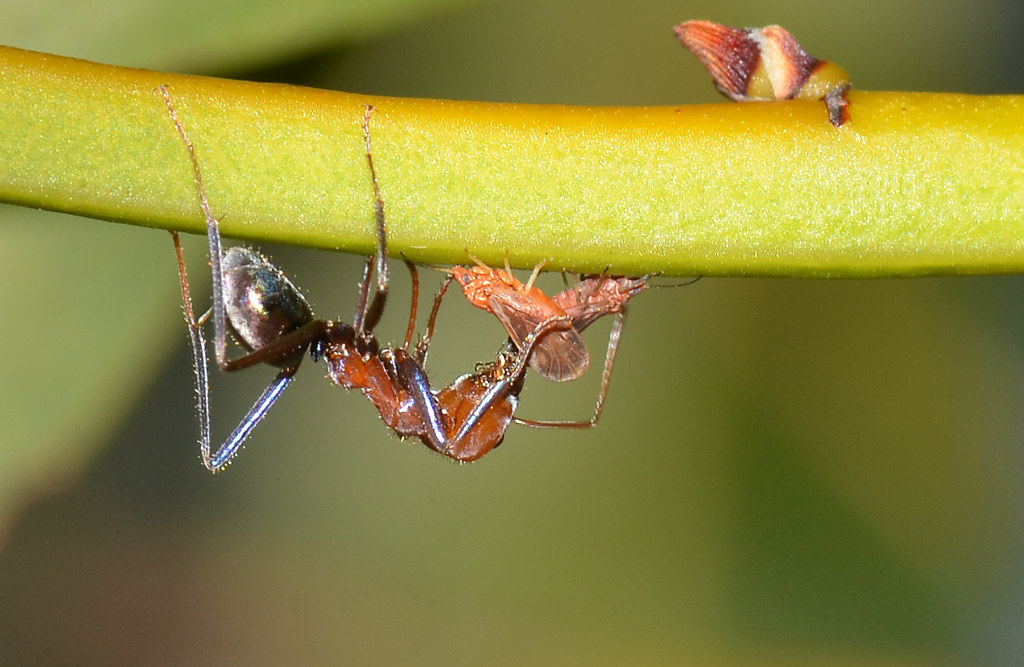
Some of the most fascinating ant species in tropical regions have formed partnerships with plants that blur the line between cooperation and exploitation. Acacia trees in Central America have evolved specialized structures called domatia – hollow thorns that serve as ready-made homes for their ant defenders. In return, the ants aggressively attack anything that threatens their host plant.
This relationship goes beyond simple protection. The ants prune competing vegetation, effectively weeding the area around their acacia partner. They also provide nutrients to the tree through their waste, creating a fertilization system that benefits both parties. The acacia, meanwhile, produces special protein-rich structures called Beltian bodies that serve as food specifically for their ant partners.
These partnerships are so tightly evolved that neither species can survive without the other. The ants have lost the ability to live independently, while the acacias cannot defend themselves against herbivores without their six-legged guardians.
Canopy Architects: Ants That Build Aerial Cities
High in the tropical canopy, some ant species have become master architects, constructing elaborate nests from living leaves and plant fibers. Weaver ants, found in the rainforests of Asia and Africa, create some of the most impressive structures in the insect world. They literally sew leaves together using silk produced by their own larvae, held like living shuttles by adult workers.
These arboreal cities can span multiple trees, connected by highways of chemical trails and physical bridges made from linked worker ants. The engineering challenges of building in the constantly moving canopy have led to innovations that human architects are only beginning to understand. The nests must be flexible enough to sway with the wind yet strong enough to protect thousands of inhabitants.
The construction process itself is a marvel of coordination. Teams of workers stretch leaves into position while others fetch larvae to provide the silk thread. The entire operation requires split-second timing and communication that would challenge any human construction crew.
The Decomposer Dynasty: Ants That Recycle the Forest
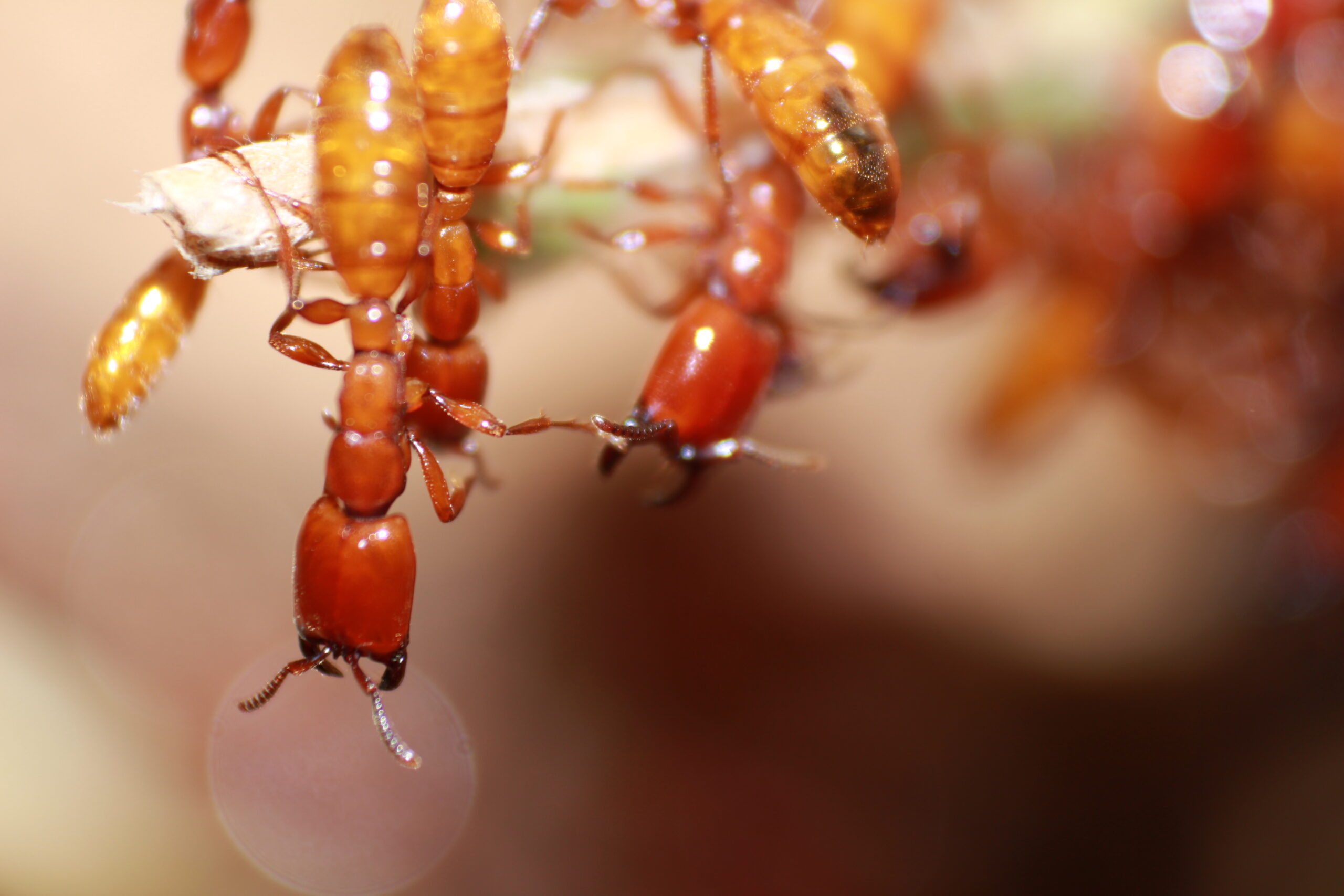
While many people focus on the dramatic hunters and farmers, some of the most important tropical ants are the unsung heroes of decomposition. These species specialize in breaking down dead plant material, animal carcasses, and organic waste, essentially serving as the forest’s recycling system. Without them, tropical rainforests would be buried under their own productivity.
Different species have evolved to handle different types of organic matter. Some specialize in fresh leaf litter, others prefer rotting wood, and still others focus on animal remains. This division of labor ensures that virtually nothing goes to waste in the tropical ecosystem. The rapid decomposition rates in warm, humid conditions mean that nutrients are quickly returned to the soil, supporting the incredible plant diversity that defines these regions.
Miniature Marvels: The Tiniest Ants Pack the Biggest Surprises
Some of the most remarkable tropical ant species are so small they could walk through the eye of a needle. These miniature marvels, often measuring less than a millimeter in length, have evolved to exploit ecological niches that larger species simply cannot access. They nest in tiny crevices, forage in microscopic spaces, and hunt prey that other ants would never notice.
Despite their size, these tiny ants display complex behaviors that rival their larger relatives. Some species maintain sophisticated chemical communication systems, while others exhibit advanced social structures with specialized worker castes. Their small size allows them to achieve incredibly high population densities, with some tropical forest plots containing millions of these microscopic workers per square meter.
The study of these miniature species continues to reveal new insights into ant evolution and ecology. Many tropical regions likely harbor thousands of undiscovered tiny ant species, each perfectly adapted to its specific micro-environment.
Symbiotic Relationships: When Ants Become Living Ecosystems
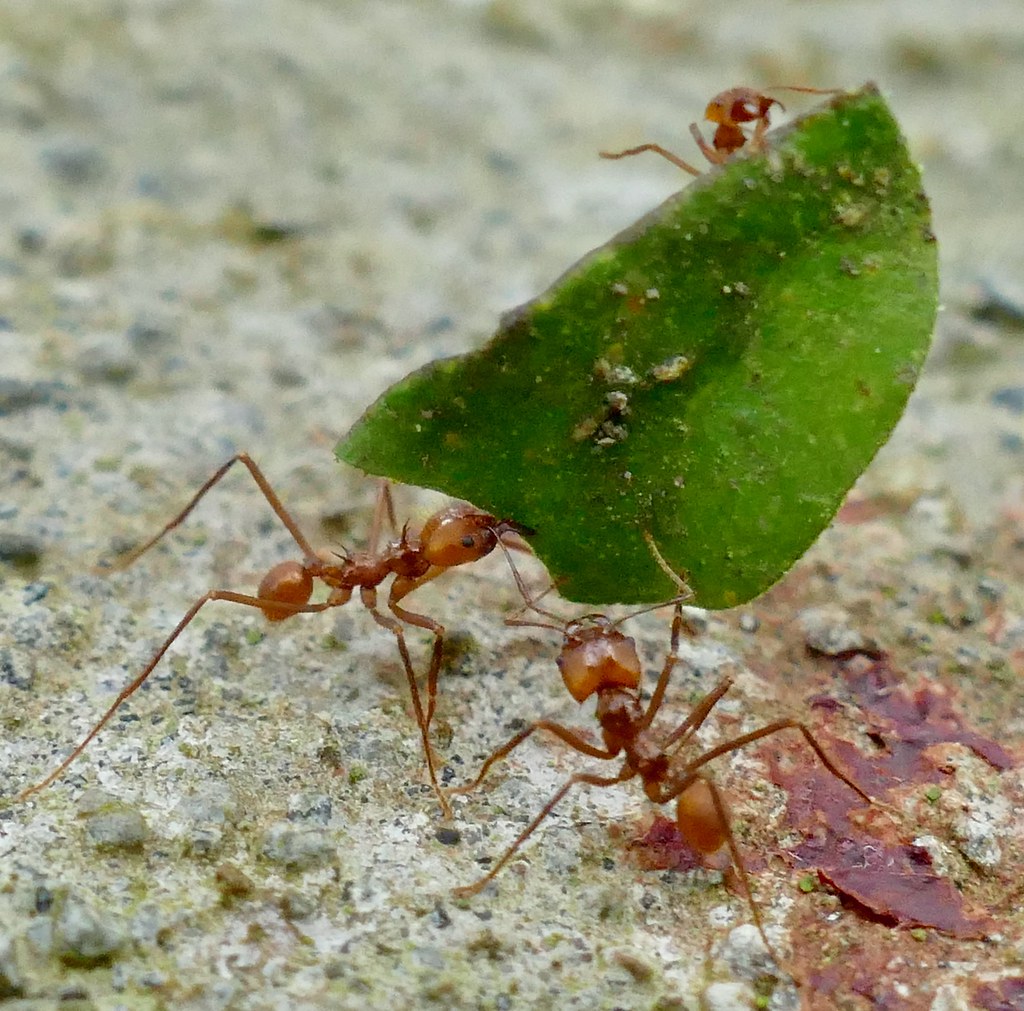
Tropical ants don’t just live in their environments – they become living ecosystems themselves. Many species host complex communities of bacteria, fungi, and other microorganisms that provide essential services to their hosts. Some ants carry antibiotic-producing bacteria that protect their food stores from contamination, while others maintain internal fungal gardens that help digest their food.
These symbiotic relationships have evolved over millions of years, creating dependencies that are crucial for survival. The leaf-cutter ants’ fungus gardens, for instance, are maintained by specialized bacteria that prevent harmful microorganisms from contaminating the crop. Without these bacterial partners, the entire agricultural system would collapse.
The warm, stable conditions of tropical environments provide ideal conditions for these complex multi-species partnerships to flourish. The result is a web of interdependence that extends far beyond the ants themselves, influencing entire forest ecosystems.
Thermal Regulation: How Ants Beat the Heat
Living in the tropics means dealing with potentially lethal temperatures, and tropical ants have evolved remarkable strategies for staying cool. Some species adjust their activity patterns to avoid the hottest parts of the day, while others have developed behavioral cooling techniques that rival modern air conditioning systems.
Certain tropical ant species create ventilation systems in their nests that would impress any engineer. They construct tunnels and chambers that create air currents, effectively air-conditioning their colonies. Some species even station workers at nest entrances to fan their wings, creating forced ventilation that keeps interior temperatures bearable.
The challenge of thermal regulation has led to some of the most innovative adaptations in the ant world. Desert-dwelling species that venture into tropical regions have evolved reflective body surfaces, while forest species have developed heat-shock proteins that protect their cells from temperature damage.
Defensive Strategies: Survival in a World Full of Predators
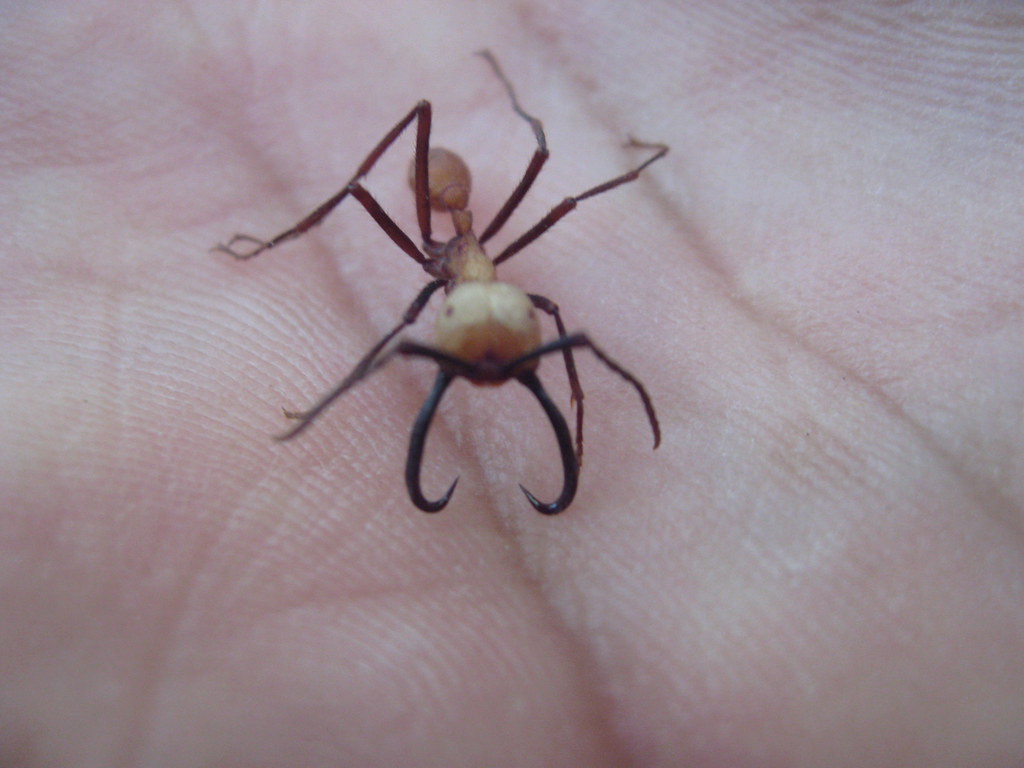
Tropical environments teem with predators that view ants as convenient protein packages, leading to an evolutionary arms race between hunters and hunted. Tropical ant species have developed defensive strategies that range from the subtle to the spectacular, each perfectly adapted to their specific threats.
Some species have evolved chemical defenses that make them unpalatable or toxic to predators. Others rely on behavioral strategies, such as forming defensive formations or sacrificing individuals to protect the colony. The most dramatic defenders can literally explode, rupturing special glands that spray toxic chemicals at attackers while sacrificing themselves for the greater good.
Speed and agility represent another defensive strategy, with some tropical ants capable of moving so quickly that they’re difficult for predators to catch. These species often live in the canopy, where quick reflexes mean the difference between life and a fatal fall to the forest floor.
The Numbers Game: Why Tropical Diversity Defies Imagination
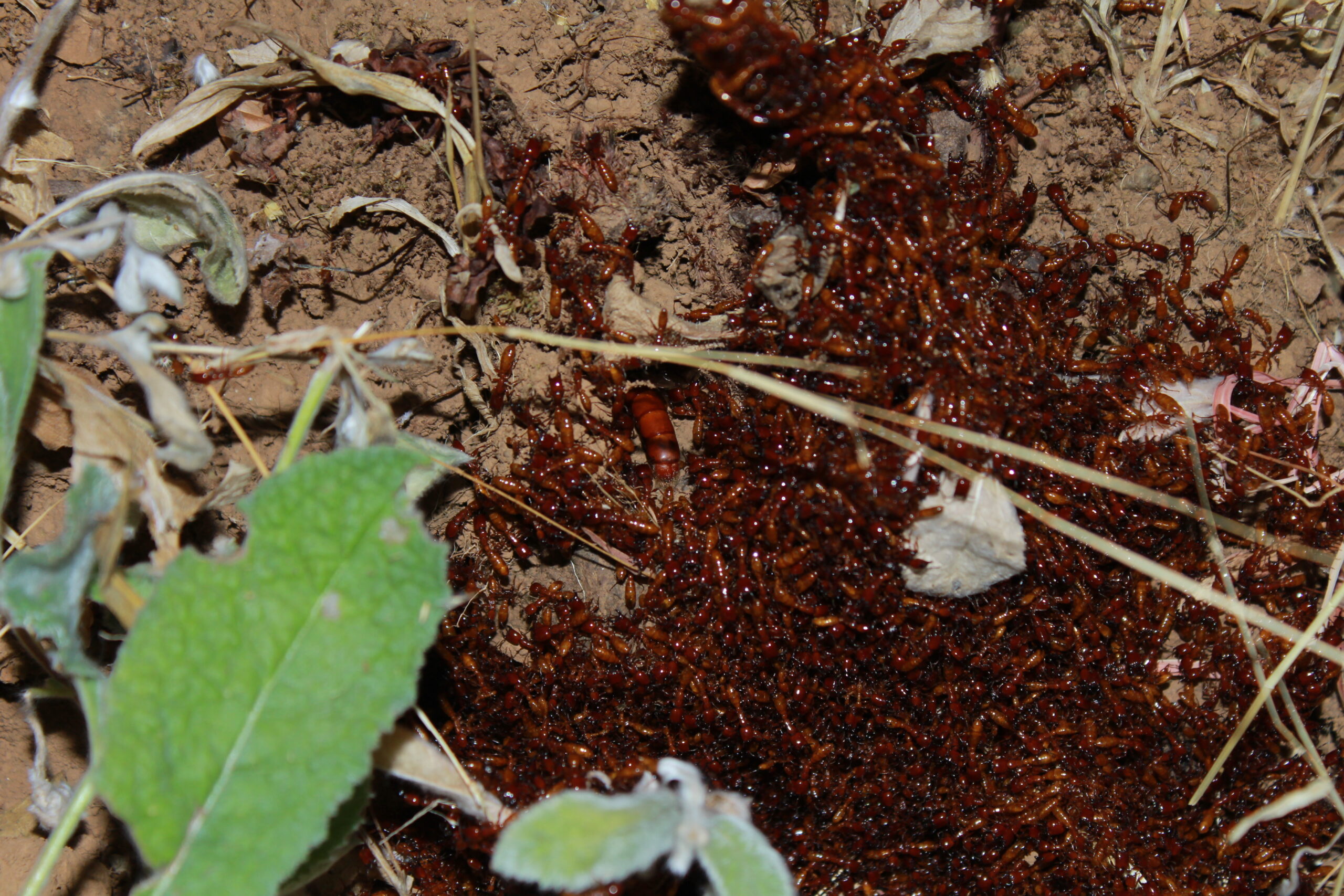
The sheer number of ant species in tropical regions challenges our understanding of how many different ways life can organize itself. A single tree in the Amazon rainforest can host more ant species than exist in all of North America. This incredible diversity isn’t just about quantity – it represents fundamentally different approaches to solving the challenges of survival and reproduction.
Recent scientific expeditions continue to discover new species at an astounding rate. Some researchers estimate that the majority of tropical ant species remain undescribed by science, hidden in the vast unexplored regions of rainforest canopies and remote jungle floors. Each new discovery reveals previously unknown adaptations and behaviors, expanding our understanding of what’s possible in the insect world.
The tropical ant diversity isn’t randomly distributed – it follows complex patterns related to geography, climate, and evolutionary history. Understanding these patterns helps scientists predict where new species might be found and how they might respond to environmental changes. This knowledge becomes increasingly important as tropical regions face unprecedented pressures from human development and climate change.
Conservation Challenges: Protecting the Invisible Majority
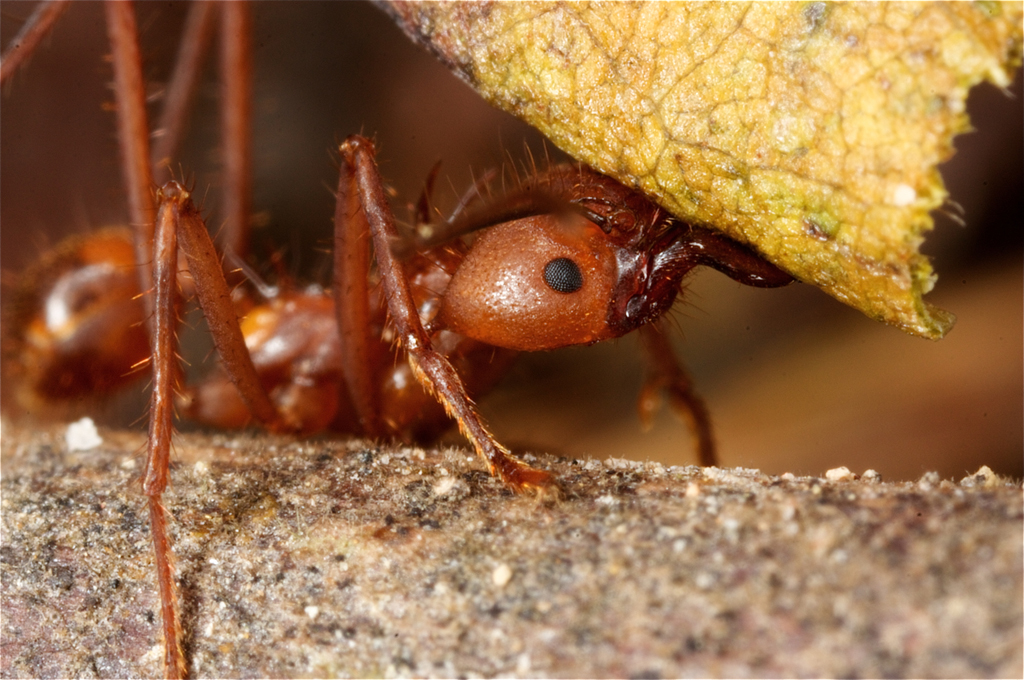
The incredible diversity of tropical ants faces mounting threats from deforestation, climate change, and habitat fragmentation. Unlike charismatic megafauna that capture public attention, most ant species remain unknown to science and invisible to conservation efforts. This creates a unique challenge: how do you protect species that haven’t even been discovered yet?
Research suggests that ant communities are incredibly sensitive to environmental changes. Small alterations in temperature, humidity, or forest structure can cause entire species to disappear from an area. The loss of even a single ant species can have cascading effects throughout the ecosystem, affecting plant pollination, seed dispersal, and decomposition processes.
Conservation efforts increasingly recognize the importance of protecting these invisible ecosystems. Some initiatives focus on preserving large, intact forest areas that can maintain the complex environmental conditions necessary for ant diversity. Others work to restore degraded habitats, recognizing that healthy ant communities are essential indicators of overall ecosystem health.
The race to document and understand tropical ant diversity has never been more urgent. As human activities continue to alter tropical environments, scientists are working to catalog as many species as possible before they disappear forever. This work reveals not just what we stand to lose, but also what we’ve never known existed in the first place.

